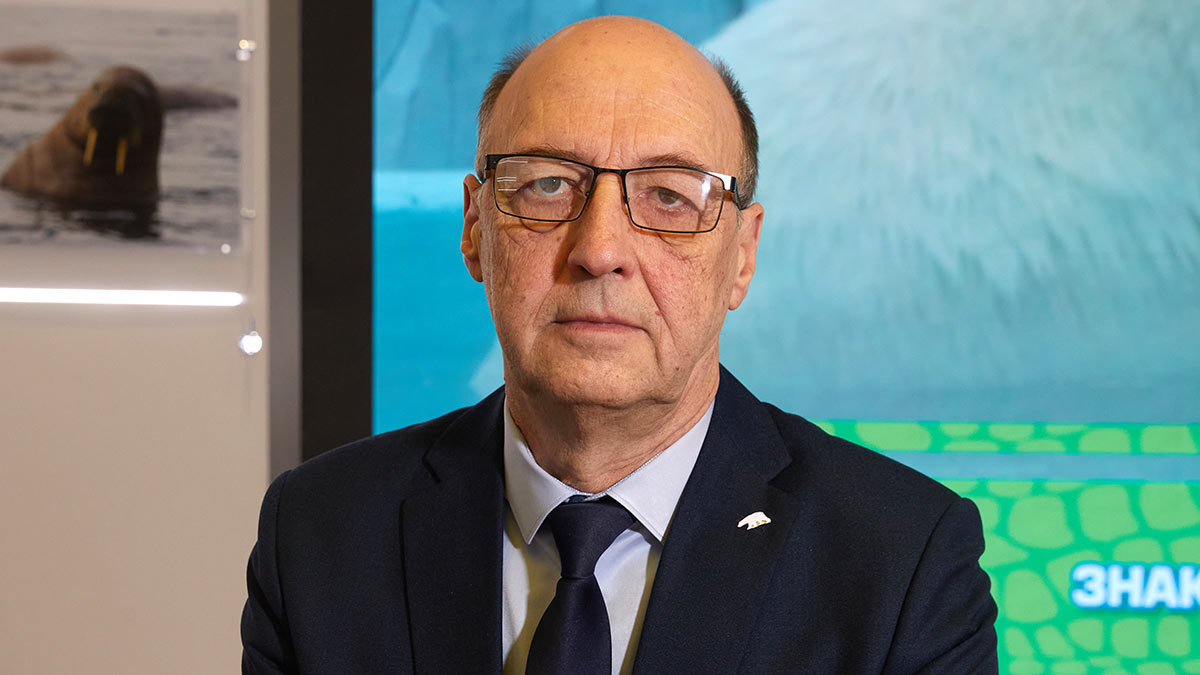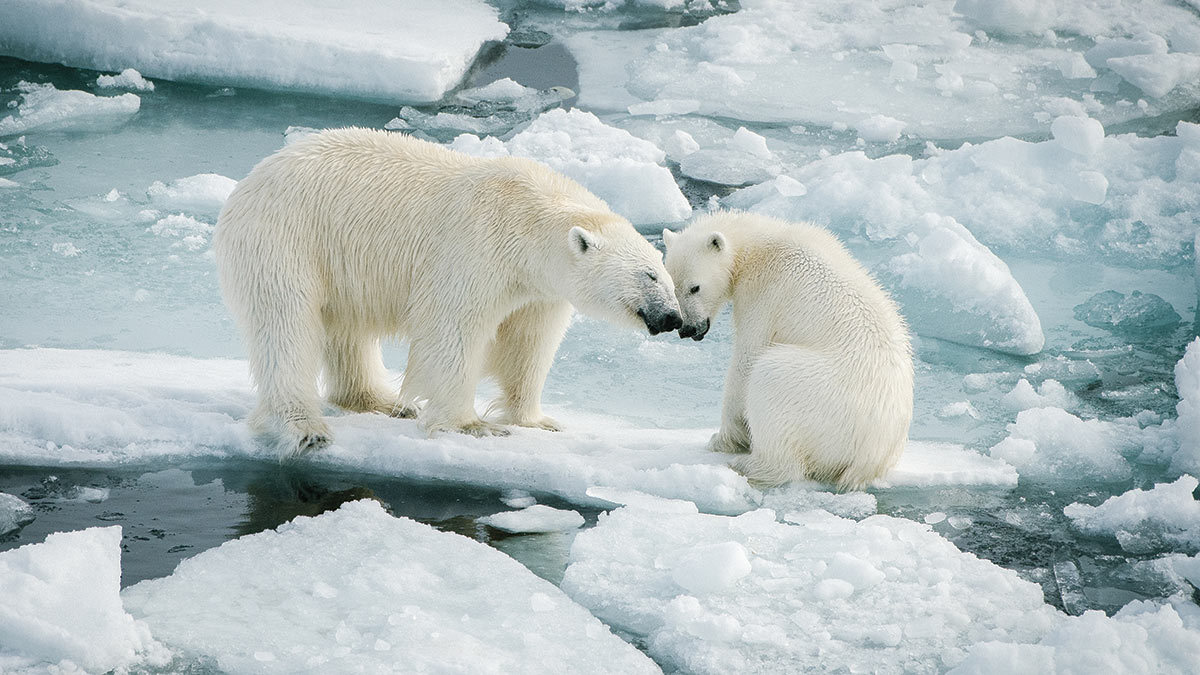
Their dependence on sea ice makes polar bears extremely vulnerable to climate change, so they need to be studied and protected. In Russia, measures to protect these animals are carried out within the framework of the national project “Ecology”. A new program for monitoring bears in the Kara Sea was launched in 2024. Candidate of Biological Sciences, leading researcher at the A. N. Severtsov Institute of Ecology and Evolution RAS Ilya Mordvintsev spoke about how animals are counted, why it is needed and what the role of business is in this.
– In 2024, as part of the national project “Ecology”, a new program to study the polar bear will start in the Russian Arctic. What is your role in this process?
– Strictly speaking, this is not a completely new project, but a continuation of the work that we have been carrying out for three years together with the Rosneft company. Since 2020, we have been researching polar bears in the Barents Sea - on Franz Josef Land and Novaya Zemlya. We determined the composition of the population, the routes of its movement, and assessed the health of the animals. Therefore, Rosneft entrusted us with a new job - for another three years and already in the Kara Sea.
– What is the main task of new research?
– The project is called “Study and monitoring of the Kara subpopulation of polar bears in conditions of climate change.” We understand that climate change is a growing issue and that it is worse in the Arctic than anywhere else. At the same time, approximately a third of the entire polar bear population lives in the Russian Arctic; it amounts to 5,000–7,000 individuals. Climate change directly affects the polar bear because its habitat is sea ice, which is now shrinking at a catastrophic rate. We need to understand what is really happening, at what speed and how to preserve this species.
– What is interesting about the Kara Sea? How is it different from Barents?
– The Kara Sea is a blind spot, an absolute lack of data. There is no information about how many polar bears inhabit its area. No records were ever carried out; even in Soviet times there were only incidental observations during ice reconnaissance. For the first time in the history of the country, we are going to conduct a total count of polar bears in the Kara Sea, determine the size of the population, see how it is distributed, and identify key water areas to maintain its stable state.
– That is, to do a kind of population census?
- Not really. When a population census is taken, many parameters are recorded: gender, age, etc. Our main research method is aerial survey; there is no way to determine the sex of a bear from an airplane. But if in the end we can confidently say that, say, two or two and a half thousand polar bears live in the Kara Sea, from a scientific point of view this will already be a super result.
– How is field work carried out?
– Counting polar bears is done from a laboratory aircraft using two methods. First, the visual counting method: scientists with binoculars look out the portholes on the port and starboard sides and record the number of bears encountered. Secondly, the instrumental accounting method. There are devices installed on board the aircraft - cameras for photo and thermal imaging. Since each device has its own shooting angle, they do not capture some part of the field of view. That is why it is important to use all methods simultaneously: they complement each other, allow you to capture the whole picture and not miss anything.
– What is a laboratory aircraft?
– In our project we use two aircrafts – An-26 “Arctic” and An-28, equipped with all the necessary equipment for carrying out field work. The principle of complementarity also applies here: the An-26 is larger, it is capable of covering longer distances, because we plan to reach the northernmost point of the Kara Sea. The An-28 is smaller both in size and in flight range, but with its help we plan to more often and carefully examine the surrounding area, in particular the coastal zone. This is important because we expect that the density of polar bears will be higher on the coast - where there is thin ice with a lot of cracks and polynyas, where there are a lot of true seals and ringed seals.
– What makes the work difficult?
– Our research in terms of the coverage of the territory and the conditions in which they must be carried out is one of the most complex, technically, logistically, and financially. In addition to the fact that we need to work throughout the Kara Sea, which is almost 900,000 square km, it is necessary to cover it in a fairly short period of time. We have to do everything quickly because the ice is always moving and the bears with it.

– So as not to count the same bears twice?
– Yes, we cannot allow individuals to be counted again. Another difficulty is that weather conditions in the Arctic are very varied. Imagine, you received a weather report in the morning near the airport, but while you are flying 1000 km north, everything has changed and you have no visibility. You are forced to turn around and leave, and the cost of renting an airplane per hour is very, very high. In addition, in parallel with airplanes, we will also use helicopters.
– Why helicopters?
– Helicopters are necessary to deliver specialists to the place of contract work. This is the second task of our project - assessing the health status of polar bears and studying the routes of their movement in the Kara Sea. Now the plane has flown by, observers have seen that the density of bears in this area is high, and we can confidently head there by helicopter to try to get closer to the animals.
– How much closer?
– Contact work involves catching animals for installation of satellite transmitters. We use satellite collars made in Russia; they allow us to track the migration routes of bears, their activity, and determine the possible locations of females in their maternity dens. In addition, during contact work we take biological samples to identify diseases and heavy metals using blood, conduct hormonal studies, and determine nutrition using isotopic analysis of fur collections.
– This is a large amount of information, how do you process it?
– Biological samples are studied by specialists during laboratory analytical and desk research. But the results of aerial photography over such a gigantic area is a huge array of data, the manual processing of which will take several years. Therefore, for the project in the Kara Sea we will use algorithms based on neural networks - artificial intelligence. It will help automatically identify bears in a large number of photo and thermal images. To count them accurately and, most importantly, quickly.
– Planes, helicopters, thermal imagers, transmitters, artificial intelligence... Is counting polar bears an expensive undertaking?
– Yes, like all work in the North. Back in 2020, the Ministry of Natural Resources approved a roadmap for the conservation and restoration of the polar bear. Rosneft was the first to get involved in this work, since businesses have more opportunities to finance them, pay for equipment, and attract scientists.
– How do businesses benefit from this?
– There is a practical meaning. The development trend of the Arctic suggests the presence of more and more people in the region every year. This is due to an increase in the number of infrastructure projects and the development of the Northern Sea Route. No wonder they say that the Arctic is our future. However, with climate change, more polar bears are being spotted on land. This is the moment when man and bear will inevitably collide. And you need to understand how to act in such encounters. How to create an effective response system, video surveillance, sound alerts, develop safety protocols to protect both people and animals.
– Who is more dangerous to whom – a bear to a person or a person to a bear?
– There are only three types of animals that are dangerous to humans: a hungry predator, a sick one, and a female protecting cubs. A polar bear that is well-fed, healthy, has the opportunity to hunt and lead its normal lifestyle, does not need a human. He will often bypass them. Therefore, it is so important to preserve its natural habitat. You need to remember about order and cleanliness, to not pollute nature, to not throw away waste, and to store it correctly.
– Do you already know everything about polar bears?
– No, we still know very little about polar bears.
– What does this knowledge provide globally?
– Knowledge is primarily needed to understand this species. Any knowledge is necessary for a person to develop; it is good to accumulate it, but it is also better to be able to apply it. We must use our knowledge to preserve the polar bear.
– Do you have a dream as a scientist?
– Our dream is to cover the entire Arctic, to work in all polar bear populations, from the Barents Sea to the Chukchi. For us, this is a big mystery that needs to be solved.
